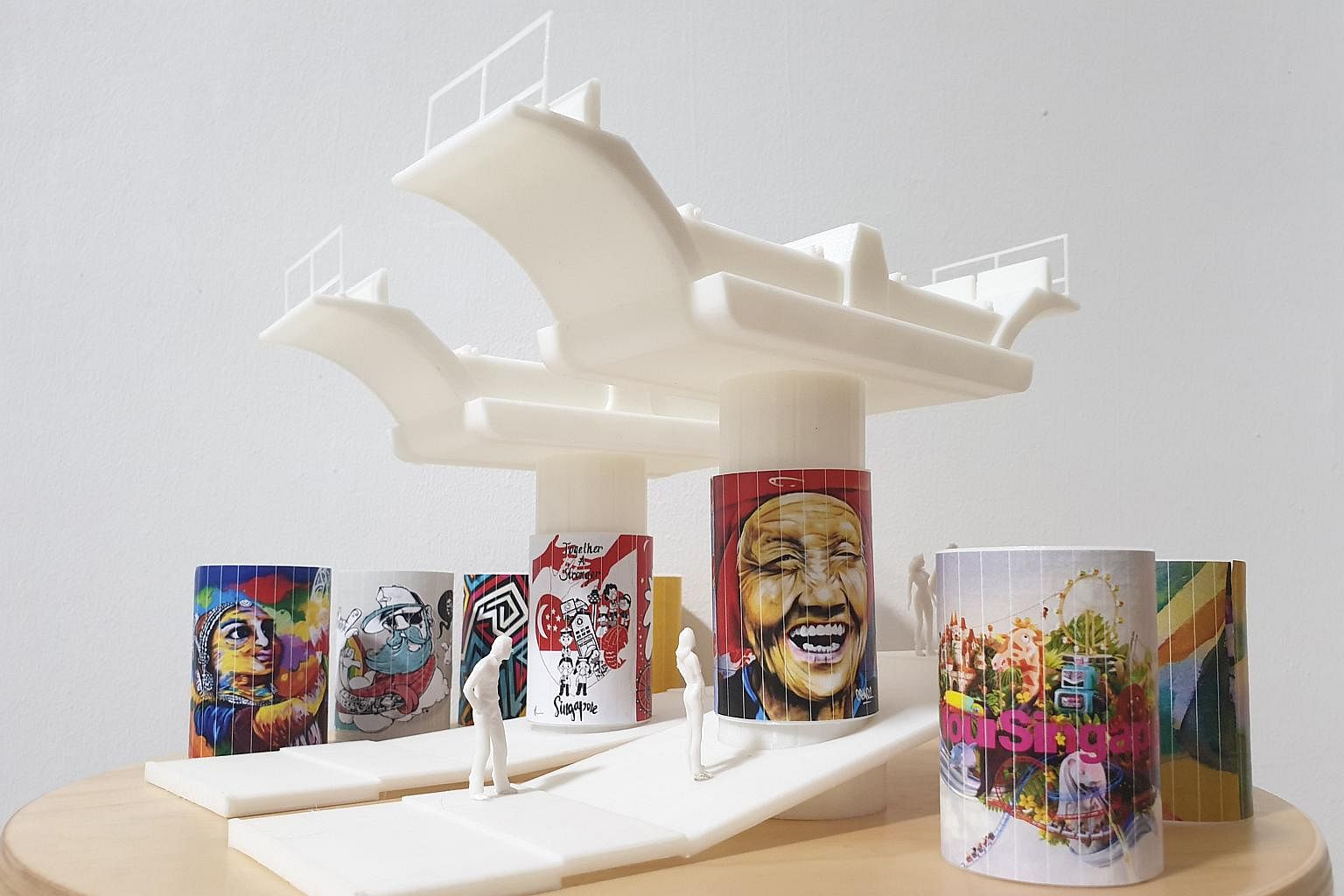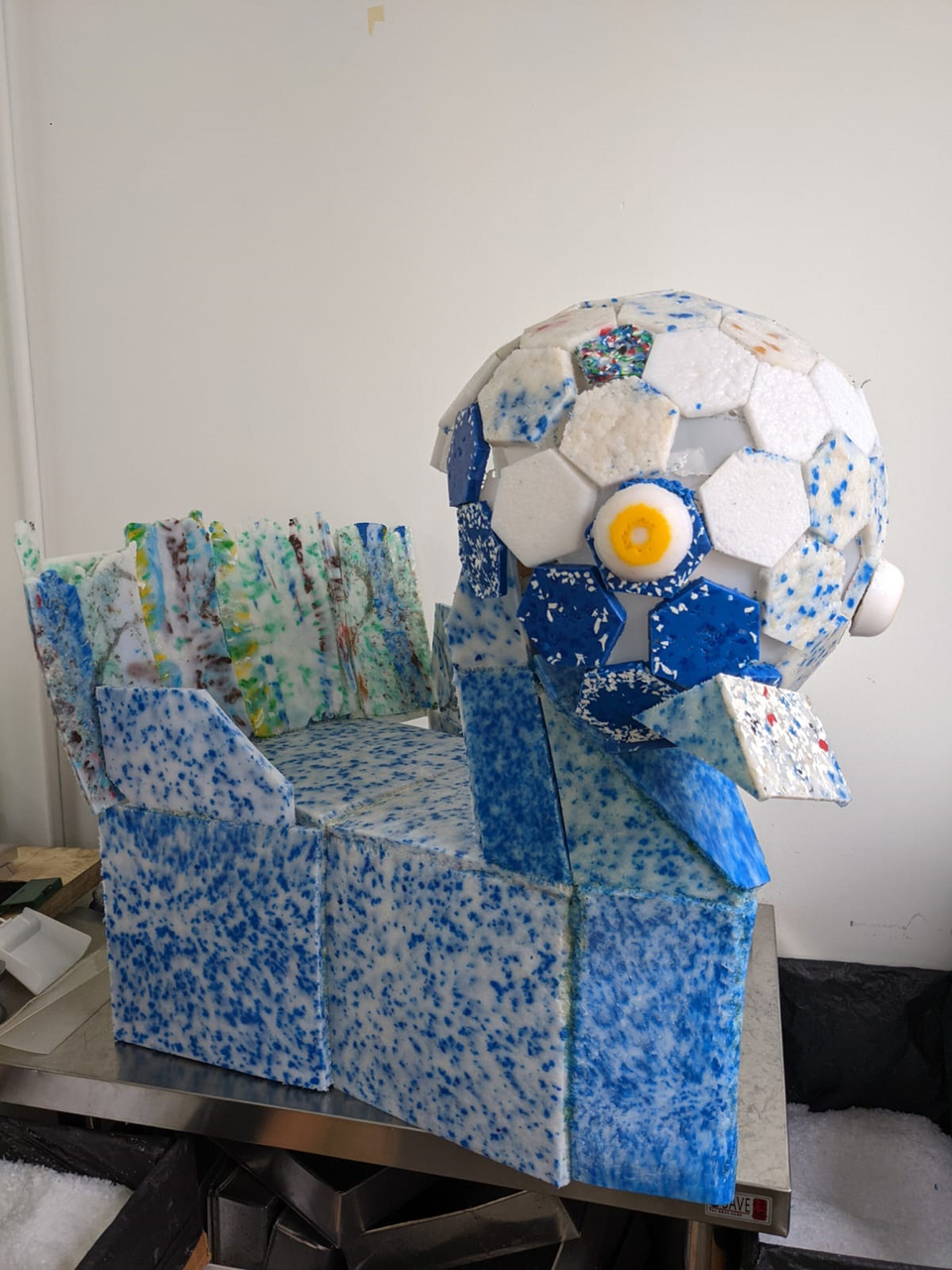Livening up MRT track pillars, reviving kiddy rides: 2 proposals win Singapore Design Awards
Sign up now: Get ST's newsletters delivered to your inbox

Architect Chio Wen Tian proposed using hoarding panels to liven up the concrete pillars that support train tracks.
PHOTO: MR CHIO WEN TIAN
Aditi Bharade, Olivia Kam
Follow topic:
SINGAPORE - A proposal to liven up the concrete pillars beneath MRT tracks and another effort to refresh old kiddy rides were the two top winners of the 31st Singapore Design Awards on Monday (June 27).
The two projects, titled Embrace and Semula To A Dying Industry, beat 130 submissions, and each won $20,000 in seed grants to develop their projects.
The awards, an initiative of the Design Business Chamber Singapore, were conceived in 1988 and aim to honour designers and their efforts to foster a more inclusive and supportive creative ecosystem.
This year’s edition was held in partnership with the Ministry of Sustainability and the Environment and the Ministry of Culture, Community and Youth, which helped to come up with the design challenges that the participants had to address.
The awards presentation was held at Design Business Chamber Singapore's headquarters at Pixel in one-north.
The idea behind Embrace - to liven up the concrete pillars that support the train tracks - came to architect Chio Wen Tian from Chio Architects during one of his regular runs under the tracks between Chinese Garden and Jurong East MRT stations.
There are 67km of train tracks above ground level in Singapore and 55km of these cut through residential estates, creating a large "urban scar", he said.
"I thought this was a good space that we can use to bring the community together through an urban gallery, which can showcase the artworks of various communities in Singapore," said Mr Chio, 34, who is married with one child.
Embrace proposes reusing steel panels from construction projects and placing hoarding panels around the pillars. These hoarding panels can be decorated with paint, stickers or light projection artwork by members of the community such as primary school pupils.
The other winning project, Semula To A Dying Industry, involves rejuvenating old and damaged fibreglass kiddy rides by refurbishing them, using upcycled plastic milk bottles discarded by businesses in the food and beverage industry.
Semula aims to divert two tonnes of plastic waste in the next year.
The idea was sparked between Mr Jeryl Yep, 29, the innovation lead of social enterprise Semula, and Mr Eddie Sim, 29, a local art director and Semula's partner.
The two friends had chanced upon a discarded duck kiddy ride and decided to preserve such rides, which they see as a slice of Singapore's cultural heritage.
"We want to inspire people to do the same and bring this heritage forward to future generations, as well as change people's mindsets (so they can see) waste as raw materials waiting to be converted into something useful," said Mr Yen.

Semula, set up a year ago, works with companies to promote sustainability, and provides employment opportunities to the underprivileged.
Ms Chee Su Eing, president of Design Business Chamber Singapore, said the two projects were chosen because they demonstrated "great depth of thought" and were of high quality.
"Embrace will add colour and life to the space and bring communities together through art and expression, while Semula's project will bring positivity and community spirit by reviving the old," she said.
The four finalists this year had to address the design challenge of encouraging sustainability among Singaporeans and connecting communities meaningfully. The submissions were evaluated on five criteria: empathy, inspiration, impact, business viability, and sustainability.
The other two finalists of the competition were non-profit children's charity Glyph Community Limited, which presented a 12-week programme to educate disadvantaged children on the importance of local food sustainability; and Scratchbac, whose mobile app aims to connect people in close proximity to one another. It encourages them to trade favours with their neighbours and people in their community, like sharing extra food or borrowing tools.

Ms Sim Ann, Senior Minister of State for Foreign Affairs and National Development, who attended the awards presentation, said: "The Singapore Design Awards not only support Singapore's future, but also enhance Singaporeans' co-creation and a sense of ownership of our beloved country."
The winners intend to put the seed money to good use.
Mr Chio wants to reach out to existing partners and collaborators such as the Land Transport Authority (LTA) and Fuhua Primary School to work out a timeline to dress up six pillars.
Ms Tay Sok Leng, co-founder of Semula, said that the money will help improve the enterprise's production system.
She adds: "We also want to create a multi-generational space with facilities such as park benches and sensory equipment for the elderly using our recyclable material, hopefully in the next nine months or so, by reaching out to partners like the town councils and community development councils."
Correction note: An earlier version of this story misspelt Mr Jeryl Yep's surname. We are sorry for the error.

